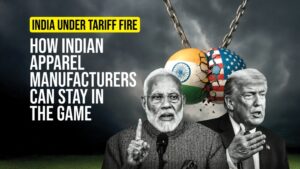Gujarat has operationalised its long-anticipated Textile Policy 2024 with the issuance of detailed guidelines. The state government has tightened eligibility conditions for expansion of existing textile units by narrowing the geographical area where incentives will apply. The policy will remain in force for five years, from October 1, 2024, to September 30, 2029.
According to the operational guidelines, only industrial undertakings located within notified industrial areas defined by the Urban Development and Urban Housing Department and situated within the limits of a municipal corporation will be considered eligible for incentives. Units that fall within municipal limits but lie outside notified industrial areas will not qualify under the scheme.
This stipulation reflects the Government’s intent to encourage industrial development outside congested urban centres, aiming to reduce pollution and ease the strain on existing infrastructure. Industry representatives from Surat pointed out that earlier, units both inside and outside notified industrial areas but within city limits were eligible for benefits. The revised framework is expected to attract fresh investment into newer zones where land is more readily available.
The policy seeks to support new industrial units, diversification, and expansion projects. It includes incentives for technical textile units across 12 key segments: Agrotech, Meditech, Buildtech, Mobiltech, Clothtech, Oekotech, Geotech, Packtech, Hometech, Protech, Indutech, and Sportech.
A wide range of textile-related activities also fall under its scope, including garmenting, apparel and made-ups, technical textiles, weaving, knitting, dyeing and processing, texturising, twisting, embroidery, and MMF spinning using polyester and viscose fibre. However, spinning of cotton and synthetic filament yarn has been excluded.
The package of incentives covers interest subsidies, capital subsidies, power tariff support, payroll assistance, funding for quality certification and technology acquisition, as well as initiatives to promote energy and water conservation.







